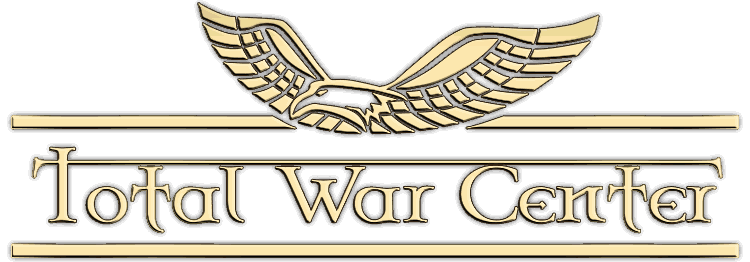-
February 06, 2020, 12:31 PM
#1
 Faction Overview: The Anglo-Saxons
Faction Overview: The Anglo-Saxons
Anno Domini:
The Anglo-Saxons

The Anglo-Saxons were a cultural group who inhabited Great Britain from the 5th century. They comprise people from Germanic tribes who migrated to the island from continental Europe, their descendants, and indigenous British groups who adopted many aspects of Anglo-Saxon culture and language; the cultural foundations laid by the Anglo-Saxons are the foundation of the modern English legal system and of many aspects of English society; the modern English language owes over half its words – including the most common words of everyday speech – to the language of the Anglo-Saxons. Historically, the Anglo-Saxon period denotes the period in Britain between about 450 and 1066, after their initial settlement and up until the Norman conquest. The early Anglo-Saxon period includes the creation of an English nation, with many of the aspects that survive today, including regional government of shires and hundreds. During this period, Christianity was established and there was a flowering of literature and language. Charters and law were also established. The term Anglo-Saxon is popularly used for the language that was spoken and written by the Anglo-Saxons in England and eastern Scotland between at least the mid-5th century and the mid-12th century. In scholarly use, it is more commonly called Old English.
The history of the Anglo-Saxons is the history of a cultural identity. It developed from divergent groups in association with the people's adoption of Christianity, and was integral to the establishment of various kingdoms. Threatened by extended Danish invasions and military occupation of eastern England, this identity was re-established; it dominated until after the Norman Conquest. The visible Anglo-Saxon culture can be seen in the material culture of buildings, dress styles, illuminated texts and grave goods. Behind the symbolic nature of these cultural emblems, there are strong elements of tribal and lordship ties. The elite declared themselves as kings who developed burhs, and identified their roles and peoples in Biblical terms.
The kingdom of England emerged from the gradual unification of the early medieval Anglo-Saxon kingdoms known as the Heptarchy: East Anglia, Mercia, Northumbria, Kent, Essex, Sussex, and Wessex. The Viking invasions of the 9th century upset the balance of power between the English kingdoms, and native Anglo-Saxon life in general. The English lands were unified in the 10th century in a reconquest completed by King Æthelstan in 927 CE.
During the Heptarchy, the most powerful king among the Anglo-Saxon kingdoms might become acknowledged as Bretwalda, a high king over the other kings. The decline of Mercia allowed Wessex to become more powerful. It absorbed the kingdoms of Kent and Sussex in 825. The kings of Wessex became increasingly dominant over the other kingdoms of England during the 9th century. In 827, Northumbria submitted to Egbert of Wessex at Dore, briefly making Egbert the first king to reign over a united England.
In 886, Alfred the Great retook London, which he apparently regarded as a turning point in his reign. The Anglo-Saxon Chronicle says that "all of the English people (all Angelcyn) not subject to the Danes submitted themselves to King Alfred." Asser added that "Alfred, king of the Anglo-Saxons, restored the city of London splendidly ... and made it habitable once more." Alfred's "restoration" entailed reoccupying and refurbishing the nearly deserted Roman walled city, building quays along the Thames, and laying a new city street plan. It is probably at this point that Alfred assumed the new royal style 'King of the Anglo-Saxons.'
During the following years Northumbria repeatedly changed hands between the English kings and the Norwegian invaders, but was definitively brought under English control by Eadred in 954, completing the unification of England. At about this time, Lothian, bordering the northern portion of Northumbria (Bernicia), was ceded to the Kingdom of Scotland. On 12 July 927 the monarchs of Britain gathered at Eamont in Cumbria to recognise Æthelstan as king of the English. This can be considered England's 'foundation date', although the process of unification had taken almost 100 years.
The dominions of Cnut the Great (1014–1035)
England has remained in political unity ever since. During the reign of Æthelred the Unready (978–1016), a new wave of Danish invasions was orchestrated by Sweyn I of Denmark, culminating after a quarter-century of warfare in the Danish conquest of England in 1013. But Sweyn died on 2 February 1014, and Æthelred was restored to the throne. In 1015, Sweyn's son Cnut the Great (commonly known as Canute) launched a new invasion. The ensuing war ended with an agreement in 1016 between Canute and Æthelred's successor, Edmund Ironside, to divide England between them, but Edmund's death on 30 November of that year left England united under Danish rule. This continued for 26 years until the death of Harthacnut in June 1042. He was the son of Canute and Emma of Normandy (the widow of Æthelred the Unready) and had no heirs of his own; he was succeeded by his half-brother, Æthelred's son, Edward the Confessor. The Kingdom of England was once again independent.
Last edited by Athos187; February 21, 2020 at 10:16 AM.
-
February 12, 2020, 02:04 PM
#2
-
December 29, 2020, 12:22 AM
#3
Libertus


 Re: Faction Overview: The Anglo-Saxons
Re: Faction Overview: The Anglo-Saxons
Lothian was occupied by Alba only in 1018. Before it was an English land.
 Posting Permissions
Posting Permissions
- You may not post new threads
- You may not post replies
- You may not post attachments
- You may not edit your posts
-
Forum Rules








 Reply With Quote
Reply With Quote








